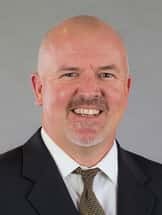Nashville-based investment manager is raising the technology bar in a historically sleepy market.
Markets Media met with AllianceBernstein municipal bond team members at their office in Nashville on June 21, while the 2023 Fixed Income Leaders Summit was taking place nearby. The following discussion with Jim Switzer, head of municipal bond trading; Tim Morbelli, portfolio manager and Susan Joyce, muni trader and head of fixed income market structure, was edited for space and clarity.
Briefly update us on your current role and responsibilities?
Jim Switzer: I run the municipal bond business. I used to run all of FI trading, but I no longer do that, I’m completely focused on municipal bonds. I brought the muni trading desk under the muni umbrella. I brought Tim over – he’s a portfolio manager on the muni team, focused on market structure, our infrastructure, and what we’re building to modernize our muni business.
What are the big stories and themes in muni bond market structure?
Jim: Each asset class has its own unique difficulties and problems. In the muni market, it’s fragmentation. You’re talking about a $4 trillion market with 50,000 obligors, as opposed to the corporate bond market, which is a 10 or $11 trillion market with a few thousand obligors, at most.
The muni market is a US retail product because it’s tax-advantaged. ‘Moms and pops’ buy it in three wrappers: mutual funds, ETFs and SMAs. SMAs are probably the fastest-growing segment and by itself also fragments the market.
The technology is basically three parts: data aggregation, optimization, and market connectivity. Market connectivity, or direct pipes, is what everybody talks about, but few do it. Data aggregation is also what people talk about, and we’ve been doing that since 2016.
We are harvesting, structuring, and using 20 million messages per week. Another unique aspect to our business is our optimization engine, which gives us the ability to build orders and go after liquidity in the market in real time. Historically in the muni market, nobody pre-allocates trades, but we pre-allocate everything, which is a really hard thing to do and has been driven by our technology.
In 2019, we had five muni traders, and we did 17,000 trades. In 2022, we had three muni traders and we did 225,000 trades. In 2023, we’re on pace for 240,000 trades. You can’t accomplish this without direct connectivity, and without the ability to synthesize markets and liquidity and engage in real time.
Whether it’s investment grade, high yield, or securitized, each asset class within fixed income has variations of this technology. We’re trying to build more systematic processes. Munis is more of a production-line manufacturing business – it’s about manufacturing product quickly.
Our three unique alphas are speed, execution and tax. We tax-loss harvest throughout the year, and that is alpha for clients. On speed, the average funding time for an SMA in munis is 50-60 days; ours is 10-14 days. With execution alpha, the ability to go out and engage liquidity at the point of where it wants to transfer is alpha generating.
Tim, can you provide an overview from your perspective?
Tim Morbelli: I’ve been at AllianceBernstein for 11 years. I’ve been through almost every desk that we have in fixed income. We saw munis as a massive opportunity given that most people think of munis as a sleepy place that hasn’t modernized. We think it’s an opportunity to be a thought leader and go after the market, which is what we’ve done over the past several years.
We’re basically building the technology in municipals, and then porting it back to the taxable side – IG, high yield, emerging markets, and global rates. With technology and innovation, most people think about it expanding from the taxable side, but we’re actually taking the other route.
Before you do anything at scale, you need to know what your opportunity set is. That’s the data aggregation component that we did back in 2016, and our competitors are still trying to figure that out. We’ve created other offerings and tools that answer questions about the market. What is the momentum of the market telling you? What is the liquidity of the market, directionally? Are we seeing better buyers? Are we seeing better sellers? How does your portfolio look versus a benchmark from a liquidity perspective?
So we’ve been focused on creating tools and leveraging data to help in our investment process. The next step is, how do you build an automated, streamlined process to grow volumes? You can’t do that without leveraging some form of automation or scale.
Jim: One thing to add. Too many people think when we do automation that we automate people out of jobs, but actually it’s quite the contrary. Susan is one of our muni traders, who stayed when we went from five to three. But she moved to a different part of the value chain to help us start thinking about other things. It’s about redefining roles and moving people to different places where they can affect the most change.
Tim: That’s a good way to put it. We can trade with fewer people, but it doesn’t mean we need fewer people. We just move those people to different parts of the business where they can be more impactful. I’m a portfolio manager now, working on portfolio construction and how to do that in a systematic way. How can we construct the proper portfolios using the data and the opportunity set in front of us, building out our optimization, leveraging that knowledge base from a market dynamics perspective? Also, what kind of risk do we want and how do we allocate that risk? Are we within our rules and restrictions that we set within those portfolios?
This is what I’m doing in my new role – understanding the dynamics of the market, and leveraging the switches or the dials that we have, to control whether we want more or less cash, or to go faster or slower, etc. That’s where the partnership of our team matters, as it’s the traders who tell me what’s going on in the marketplace.
Susan, what is your perspective on key themes?
Susan Joyce: I can fill in a little bit about moving up the value chain. You have a trading team who no longer needs to focus on small trades, rather they are maintaining the controls. What we’re releasing soon is the ability to adjust pricing based on what the traders are seeing, based on the trades that we’re doing. With the market forces that Tim talked about, we can control our overall algo, including how aggressive we want to be and if we want to pull back. Those decisions are made in conversation with the portfolio managers.
All this allows us traders to spend more time on large block trading. If there is a big liquidity event, that’s something we can be on top of rather than focusing on smaller individual trades.
What has been the experience with recent liquidity events, such as the banking mini-crisis earlier this year?
Tim: Thematically, we’re seeing dealers question how much balance sheet they can commit to the market, because there’s more regulatory scrutiny around risk.
With Silicon Valley Bank, everyone was concerned about what was in their book and what they had to sell. How much exposure did they have to markets and how would they clear that risk? If people are thinking that way, they’re going to provide less balance sheet to the buy side, and less balance sheet to the issuer. How do you bridge that gap? You have to find ways to leverage your network, or your connectivity to the buy side, so that they can provide the liquidity. Dealer balance sheets are going to get smaller, but the issuer still wants to issue and buy side needs to put money to work. How do you connect buyers with sellers?
Susan: With some private transactions that were previously taken on by regional banks, they’re coming to asset managers like us, to provide liquidity to issuers who don’t want to go through public markets. Regional bank buyers still exist, but they are less willing to commit capital towards this lending.
Jim: There’s no motivation for the sell side to take up their balance sheet. But they still need to trade. How do you trade more with less balance sheet? You have to get creative.
This is the opportunity for disruption in data and connectivity. In three to five years, what will ATSs look like? What will EMS technology be? What will sell-side behavior be like?
A simple way to look at it is, at any point last year we had $1 billion of bonds that wanted to sell. We were able to sell the bonds, but it took time. If there was a place where we and other buy-side firms could go and create a “shadow balance sheet” if you will, that’s refereed by the sell side, that would work. If you had contributing asset managers that knew this balance sheet, that’s how we’re going to trade more. The buy side has to get more involved.
What themes did you pick up at Fixed Income Leaders Summit?
Jim: How do you get momentum within your firm? If you’re the head of trading, how do you push for this? There’s always the debate between third-party vendors and DIY, but honestly, there aren’t many people who can build it themselves. We’re successful by having people like Tim and Susan and other quant-oriented people, who we bring onto the team and we teach them to trade. We’re building the trader of tomorrow, who can partner with our technology team and our developers to build things. That’s why we build a lot and we don’t buy as much – because we’re good at building.
And then there’s AI. Lots of people are going to throw AI around in conversation, but everyone’s definition of AI is different. Yes, it’s coming, and yes, it is good. But if you’re an asset manager, you can’t just sit there and say “AI is going to help us.” The only thing that’s going to help an asset manager is modifying behavior and thinking about different ways to do things.
If you’re doing things the same way today as you were doing five years ago, or even three or two years ago, you’re probably doing it wrong.




